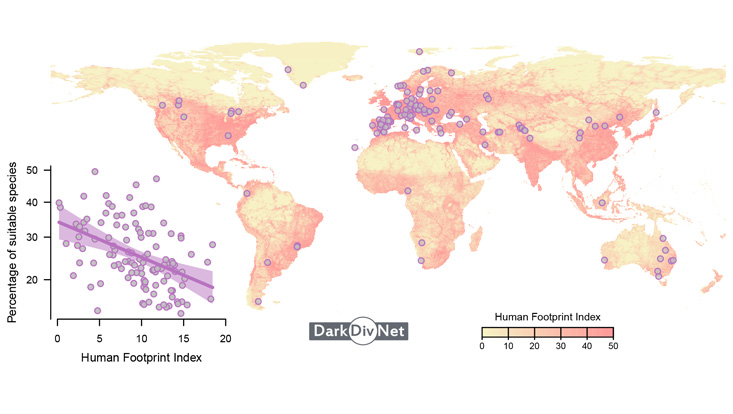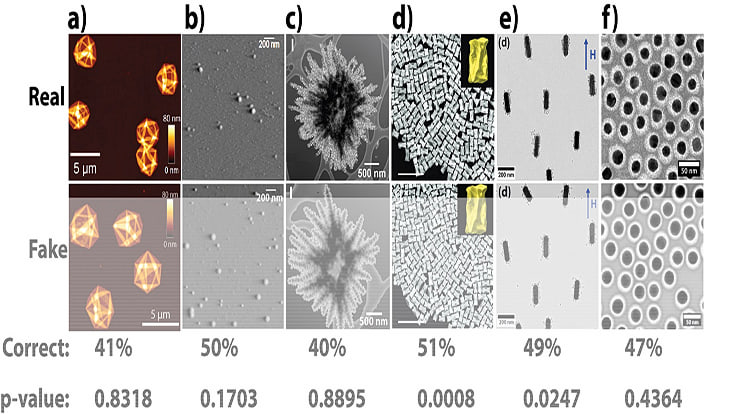and Natural Sciences
Global dark diversity study reveals hidden impact of human activities on nature
2 April 2025, by MIN-Dekanat

Photo: Pärtel
A global study with contributions by the Department of Biology at the University of Hamburg shows that in human-disturbed regions, many native plant species are absent from their natural habitats. These missing species can be considered as the “dark diversity” of a region. The results of the study have now been published in the scientific journal “Nature”.
Over 200 scientists from the research collaboration DarkDivNet studied plants at nearly 5500 sites in 119 regions around the world. At each site, local researchers recorded all plant species and identified the dark diversity – native species that could live there but were absent. This allowed them to understand the full potential of plant diversity at each site and measure how much of the potential diversity was actually present. This way of measuring biodiversity revealed the hidden impact of human activities on natural vegetation.
In regions with little human impact, ecosystems typically contain over a third of potentially suitable species, with other species remaining absent mainly due to natural reasons, such as limited dispersal. By contrast, in regions heavily impacted by human activities, ecosystems contain only one out of five suitable species. Traditional biodiversity measurements, like simply counting the number of recorded species, did not detect this impact because natural variation in biodiversity across regions and ecosystems hid the true extent of human impact.
The DarkDivNet collaboration started in 2018, based on an idea by Prof. Meelis Pärtel, Professor of Botany at the University of Tartu and lead author of the study. “We had introduced the dark diversity theory and developed methods to study it, but to make global comparisons we needed consistent sampling in many regions. It felt like an impossible mission, but many colleagues from different continents joined us.” Despite the challenges posed by COVID-19 and global economic and political crises, data were gathered over the years.
Dr. Ute Schmiedel, Postdoctoral Researcher in the group Organismic Botany and Mycology at the Department of Biology at University of Hamburg contributed vegetation data from Namaqualand in the Succulent Karoo of South Africa to this study. The Succulent Karoo is a very species-rich semi-desert in the west of South Africa, where most of the rain falls during the cool winter season. The area selected for this study has been surveyed annually by Ute Schmiedel since 2001 to document changes in the vegetation.
Together with Dr. Lotte Korell from the Helmholtz-Centre for Environmental Research (UFZ), Dr. Kristin Ludewig, Postdoctoral Researcher in the group Applied Plant Ecology at the Department of Biology at University of Hamburg, examined a mixed birch-oak forest near a heath pond close to Soltau in the Lüneburg Heath for the study. This type of forest is considered near-natural vegetation for the Lüneburg Heath, as the soil conditions are very sandy and low in nutrients. These soil conditions are also emphasized by the blueberries, pipe grass and European seven-star, which occur in the undergrowth.
The level of human disturbance in each region was measured using the Human Footprint Index, which includes factors like human population density, land-use changes (such as urban development and agriculture), and infrastructure (roads and railways). The study found that plant diversity at a site is negatively influenced by the level of the Human Footprint Index and most of its components in a surrounding area, up to hundreds of kilometres away. Prof Pärtel summarises, “This result is alarming because it shows human disturbances have a much wider impact than previously thought, even reaching nature reserves. Pollution, logging, littering, trampling and human-caused fires can exclude plants from their habitats and prevent recolonization. We also found that the negative influence of human activity was less pronounced when at least one-third of the surrounding region remained pristine, supporting the global target to protect 30 % of the land.”
The study highlights the importance of maintaining and improving ecosystem “health” beyond nature reserves. The concept of dark diversity provides a practical tool for conservationists to identify absent suitable species and track progress in restoring ecosystems.
Original Publication
Pärtel et al.
Global impoverishment of natural vegetation revealed by dark diversity,
Nature (2025).


